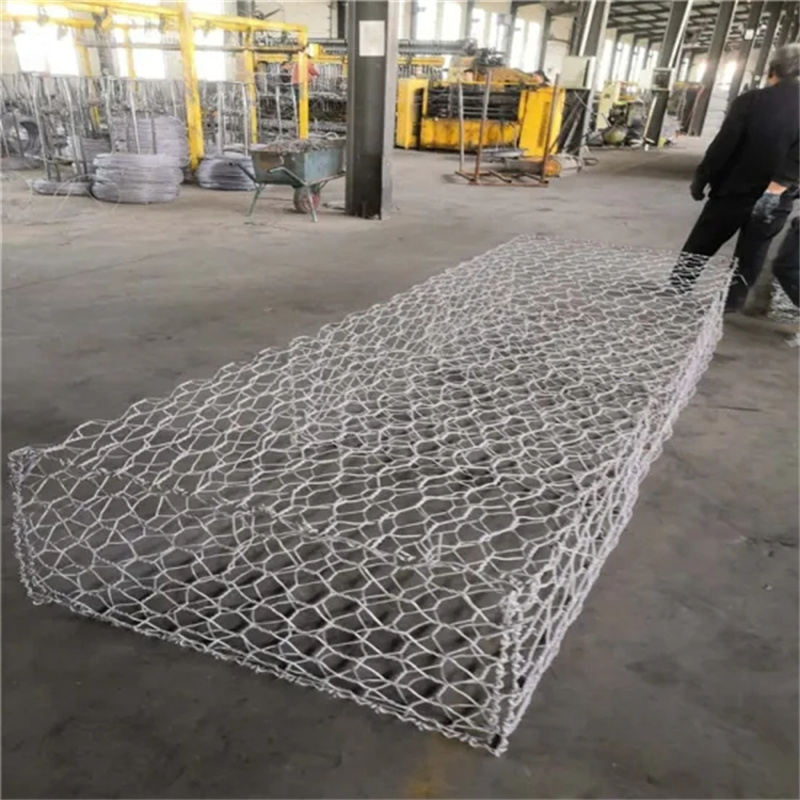okt. . 14, 2024 05:43 Back to list
Top Rated Curved Gabion Cages for Effective Landscape and Erosion Control Solutions
The Best Curved Gabion Cages A Perfect Blend of Functionality and Aesthetics
In the world of landscaping and civil engineering, the importance of versatile and durable materials cannot be overstated. One such innovative solution that has gained tremendous popularity in recent years is the gabion cage, particularly the curved gabion cages. These structures have become a favorite for architects, engineers, and landscape designers alike due to their unique blend of functionality, aesthetic appeal, and ecological benefits.
What Are Gabion Cages?
Gabion cages are wire mesh containers filled with rocks, stones, or other materials. Traditionally, they are used for erosion control, retaining walls, and even decorative landscaping elements. The term gabion is derived from the Italian word for big cage, which perfectly describes their structure. The introduction of curved gabion cages has revolutionized the way we use these enclosures in design and construction.
The Advantages of Curved Gabion Cages
1. Aesthetic Appeal One of the most significant advantages of curved gabion cages is their visual appeal. Unlike traditional straight-wall structures, curved cages can create smooth, flowing lines that add a modern touch to landscapes. They can be designed to fit any curvature and can enhance the natural beauty of the surrounding environment.
2. Structural Integrity Curved configurations often provide superior structural integrity. The arching shape distributes weight more evenly and can better withstand lateral forces, making them ideal for retaining walls or barriers in areas prone to flooding or erosion.
3. Environmental Benefits Gabion cages, being filled with natural stones, allow for better drainage than traditional concrete walls. This permeability helps vegetation thrive and reduces soil erosion, which is critical in maintaining local ecosystems. Additionally, they can be designed to encourage plant growth on their surfaces, further integrating them into the natural landscape.
4. Cost-Effectiveness Curved gabion cages can often be cheaper to produce and install than conventional building materials such as concrete or bricks. Natural stones used as filler are readily available and often less expensive than manufactured materials. Furthermore, their installation does not require specialized labor or heavy machinery, reducing overall project costs.
best curved gabion cages

5. Versatility Curved gabion cages can be utilized in various applications, from creating protective barriers and sound walls to serving as decorative planters or seating areas in public parks and gardens. Their versatility allows for creative designs that can adapt to different environments and purposes.
Designing with Curved Gabion Cages
When planning to incorporate curved gabion cages into your project, several design considerations should be kept in mind
- Material Selection The choice of filling material is vital. While stones are the most common filler, alternatives such as recycled materials or concrete can be used to achieve specific aesthetic outcomes.
- Size and Scale The dimensions of the gabion cages should be proportionate to the surrounding architecture and landscape. Larger cages can serve as focal points, while smaller cages can complement existing features.
- Integration with Landscaping To enhance the natural beauty of the environment, consider integrating plants and greenery into the design. Planting native species around and within the gabion structure can enhance its ecological benefits and visual appeal.
Conclusion
Curved gabion cages represent a remarkable advancement in design and architecture, combining sustainability, adaptability, and beauty. Whether used for functional purposes like erosion control or as striking landscaping features, these structures provide a unique modern solution in various settings. As we move toward an era of sustainable living, the adoption of innovative materials like curved gabion cages will play a pivotal role in shaping our built environment. With their ability to merge seamlessly with nature, curved gabion cages are not just a construction technique but a symbol of a more harmonious relationship between human design and the natural world.
-
Understanding Load-Bearing Capacity of Gabion Boxes
NewsJul.17,2025
-
The Importance of Corrosion-Resistant Wire in Gabion Construction
NewsJul.17,2025
-
How Gabion Boxes Prevent Soil Erosion Effectively
NewsJul.17,2025
-
Environmental Benefits of Gabion Cages
NewsJul.17,2025
-
Best Stone Types for Gabion Walls with Steps
NewsJul.17,2025
-
Benefits of Using Rock Gabion Baskets in Landscaping
NewsJul.17,2025
-
The Role of Galvanized Gabion Mesh in Riverbank Protection
NewsJun.26,2025






